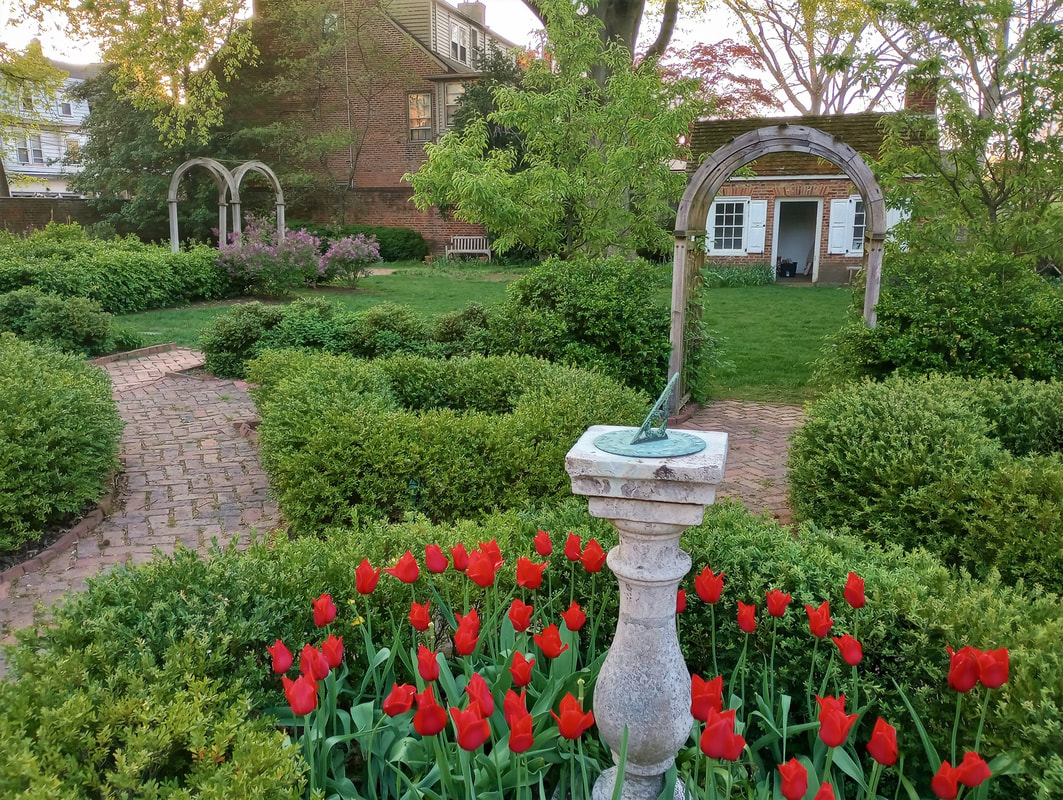The Amstel and Dutch House gardens are both notable examples of Colonial Revival design, a style especially popular in the early to mid-20th century.
The first half of the 20th century was a turbulent time in American history. Americans had experienced World War I, an explosion of new technologies, behaviors, and values, and the Great Depression. Many Americans were nostalgic for a simpler past and sought consolation by placing their confidence in the founding fathers and the early days of the republic. As a result, reviving an idealized version of “Colonial American” became popular.
The Colonial Revival movement sought to create a romantic and idealized version of colonial America through the use of colonial imagery. Colonial Revival designs do not intend to recreate an authentic version of Colonial America. They are not based on archaeological research or historical documentation, although they can include authentic colonial materials and design elements.
Colonial Revival gardens capture the spirit of the finest 18th century colonial gardens while creating a style uniquely American. They are among the most beautiful gardens ever created in this country. The style was among the most popular styles of the 20th century, and the appeal of Colonial Revival design endures today.
Some of the hallmarks of Colonial Revival garden design are:
The first half of the 20th century was a turbulent time in American history. Americans had experienced World War I, an explosion of new technologies, behaviors, and values, and the Great Depression. Many Americans were nostalgic for a simpler past and sought consolation by placing their confidence in the founding fathers and the early days of the republic. As a result, reviving an idealized version of “Colonial American” became popular.
The Colonial Revival movement sought to create a romantic and idealized version of colonial America through the use of colonial imagery. Colonial Revival designs do not intend to recreate an authentic version of Colonial America. They are not based on archaeological research or historical documentation, although they can include authentic colonial materials and design elements.
Colonial Revival gardens capture the spirit of the finest 18th century colonial gardens while creating a style uniquely American. They are among the most beautiful gardens ever created in this country. The style was among the most popular styles of the 20th century, and the appeal of Colonial Revival design endures today.
Some of the hallmarks of Colonial Revival garden design are:
- Formal, orderly, and symmetrical design
- Straight, not meandering, paths or walks, typically paved with brick
- A distinct focal point, typically a sundial but sometimes a fountain or urn
- Enclosures of boxwood or privet hedges, fences (white picket preferred), or low walls
- Geometric but lush flower beds
- Romantic garden structures: trellises, arbors, and pergolas

